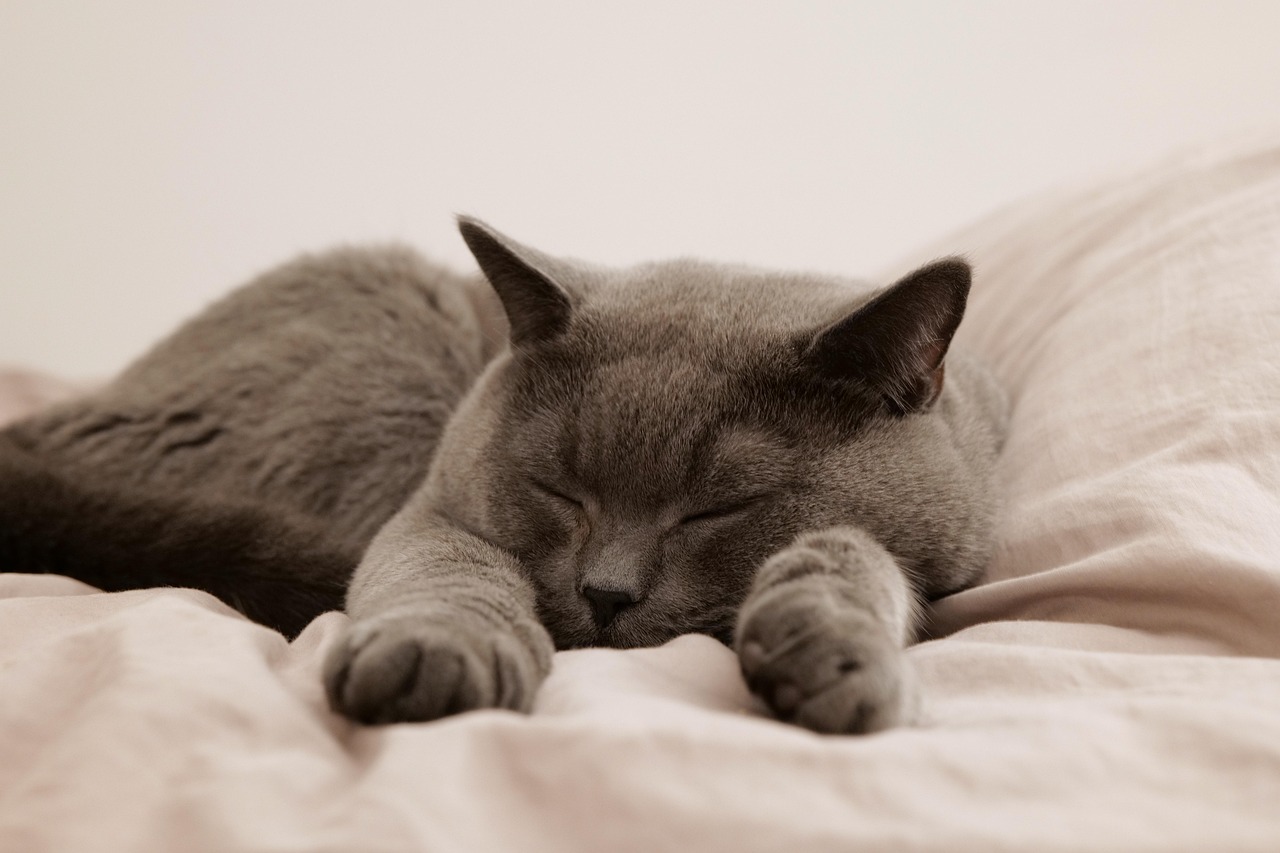When your beloved feline companion begins to show subtle signs of nearing the end of their journey, it’s one of life’s most heartbreaking moments. Yet understanding what your cat is trying to communicate during their final chapter can help you provide the love, comfort, and dignity they deserve as they prepare to cross that mythical Rainbow Bridge.
They’re Looking for Quiet Comfort
As the end of a cat’s life draws near, they often withdraw from their owners and fellow animal companions. Some cats will seek out an isolated hiding place in order to avoid contact. This isn’t rejection—it’s your cat’s instinct telling them to find a safe, peaceful space where they feel protected.
Your feline friend might suddenly start spending time under beds, in closets, or other secluded spots they’ve never shown interest in before. Dying cats might be more prone to hiding for long periods of time, not wanting to come out for meals or things they typically enjoy. They’re essentially asking for a sanctuary where they can rest without feeling vulnerable.
Their Appetite is Sending a Message

For many cats, mealtime is the highlight of their day, making a loss of appetite especially concerning. A cat reaching the end of her life may try unsuccessfully to eat or display a total lack of interest in food. When your usually food-motivated cat starts turning away from their favorite treats, they’re telling you something significant is changing.
This message goes beyond simple pickiness. If your cat is feeling ill, she may not want to eat. Some medications can also impair your cat’s sense of taste and smell, making her less interested in food. It’s their way of conserving energy for what their body considers most essential during this difficult time.
Sleep Patterns Reveal Inner Struggles

Healthy cats sleep up to 16 hours a day. Those reaching the end of their lives tend to spend even more of their time resting. They often remain in the same spot all day rather than changing to various nap spots throughout the home or following you from room to room.
This extended sleeping isn’t laziness—it’s your cat’s body telling them to preserve every ounce of energy they have left. “As your cat’s body starts to shut down, you may notice a decline in their energy levels,” says Sara Ochoa, doctor of veterinary medicine and cofounder of Howto-pets.com. Pain or weakness can also deplete energy, causing your kitty to choose sleeping over the things they normally enjoy.
Changes in Social Interaction Speak Volumes

A dying cat’s behavior might change significantly as they approach the end. Although these changes might not be the same for every cat, they might include: Irritability. Your kitty might become more prone to hissing, growling or lashing out. Clinginess. Some cats become more loving near the end, and they may want to stick close and follow you around.
These seemingly contradictory behaviors both carry the same message: your cat is feeling vulnerable and uncertain. Some cats seek comfort through increased affection, while others protect themselves by becoming defensive. Neither response is wrong—they’re both ways of coping with internal changes they don’t understand.
Their Voice Tells a Different Story
Occasionally, cats that are dying may become suddenly, loudly, and unexpectedly vocal. These sounds might include yowling, meowing, or whining and might be a sign of pain or distress. Your typically quiet cat might start making sounds you’ve never heard before, or your chatty companion might fall completely silent.
Changes in vocalization (e.g., yowling, meowing excessively, or silence) can indicate confusion, discomfort, or even an attempt to communicate something they can’t express any other way. Listen carefully to these vocal changes—they’re often your cat’s clearest attempt at telling you how they’re feeling.
Weight Loss Reveals Internal Battles
Weight loss is very common in senior cats. Some of this is due to normal muscle loss: as your cat ages, her body becomes less efficient at digesting and building protein, causing her to lose muscle mass. Your cat may be eating well but still lose weight.
When your cat’s body starts changing shape despite your best efforts to keep them nourished, they’re showing you that internal systems are beginning to shut down. Weight loss in senior cats is fairly common. This is somewhat due to normal muscle loss that comes with aging: as your cat gets older, its body becomes less efficient at processing and producing protein, resulting in muscle loss. Even if your cat eats well, they may still lose weight. The weight loss may become drastic over time.
Mobility Changes Signal Deeper Issues
“As their body continues to decline, cats may struggle with mobility and become increasingly weak,” Ochoa says. Senior cats (those between the ages of 11 and 14) are also susceptible to osteoarthritis, which can make movement difficult and painful. Your cat might stop jumping onto favorite perches or struggle with stairs they once navigated effortlessly.
Senior cats frequently have limited mobility caused by muscle loss, arthritis, or other health issues. Weakness is typically progressive, beginning with something as simple as being unable to leap up onto the kitchen counter and progressing to difficulties climbing stairs and being unable to enter and exit a tall litter box. These physical limitations are your cat’s way of showing you that their body is asking for help and accommodation.
Grooming Habits Reflect Self-Care Struggles

The first signs of a dying cat include lethargy, a lack of appetite, a messy coat, and a decrease in the frequency of urination and defecation. When your normally pristine cat starts looking unkempt, they’re not being lazy—they’re telling you that basic self-care has become too exhausting or painful.
This decline in grooming is particularly significant because cats are naturally fastidious creatures. Cats will usually display clear signs if they are feeling pain due to an illness or injury. They may meow constantly or hide away from people; some cats will even stop grooming themselves if they are too uncomfortable or unwell. A matted or dirty coat is often one of the clearest messages that something is seriously wrong.
Breathing Patterns Indicate Distress

Signs of difficulty breathing include open-mouth breathing, stretching her head and neck out straight from her body, and strong abdominal movements as she breathes. If your cat has any of these symptoms, she is struggling to get oxygen into her body. This is an emergency.
Labored breathing is your cat’s way of telling you they’re fighting to maintain basic life functions. Labored breathing, a loss in muscle mass, and changes in alertness could also occur during the early stages. Unlike other subtle signs, breathing difficulties require immediate veterinary attention, as they indicate your cat is in serious distress.
Temperature Regulation Shows System Shutdown
“Cats develop thinner skin with age, and they may also lose muscle mass, which can make it harder for senior cats to regulate their body temperature,” says Danielle Rutherford, doctor of veterinary medicine and associate veterinarian at Westside Veterinary Center in New York. “In these cases, you may observe your cat sitting on the radiator more or seeking out warmer areas in the home.” Poor circulation can also cause the extremities, like paws and noses, to become cold to the touch, Rutherford adds.
When your cat starts seeking out heat sources they’ve never been interested in before, or when their paws feel unusually cold, they’re showing you that their body’s internal thermostat is struggling. This is often one of the gentler ways cats communicate that their systems are beginning to slow down.
A Final Message of Trust and Love
Disinterest in the world around her and a lack of joy for things she once loved are signs that your cat is ready to pass on. Perhaps the most profound message your cat sends during their final days isn’t about their physical discomfort—it’s about the trust they place in you to understand and help them through this transition.
As far as we know, cats do not fear death, though they may wish to be free from pain or discomfort. It is not uncommon for an ill cat or any other predator to hide symptoms of illness, as this may alert other predators that they are ill. As such, it is not unusual for a cat to begin to hide as their time draws near, but this could be a symptom of their worsening illness and not a direct sign that they know the end is coming. In showing you these signs, your cat is demonstrating ultimate faith that you’ll recognize their needs and provide comfort during their most vulnerable moments.
Conclusion
Understanding your cat’s final messages isn’t about prolonging the inevitable—it’s about honoring the deep bond you’ve shared and ensuring their journey to the Rainbow Bridge is filled with dignity, comfort, and love. But pet parents can take comfort knowing that euthanasia is a quick, pain-free way to end a cat’s suffering at the end of their life.
The greatest gift you can give your feline companion during this difficult time is your presence, understanding, and willingness to make the hard decisions that put their comfort above your desire to keep them with you. When the time comes to say goodbye, remember that your cat’s final message is one of trust—they’re counting on you to help them cross that bridge with the same love and care you’ve shown them throughout their life. Did you expect that saying goodbye could be such a profound act of love?





